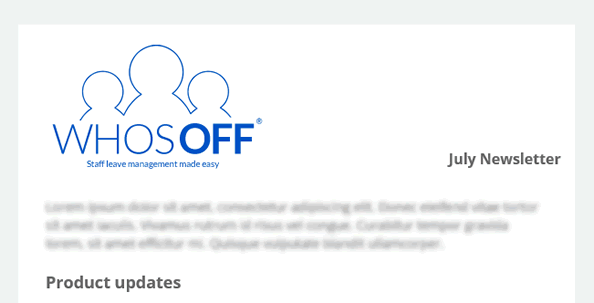Most businesses have a holiday calendar, but annual leave isn’t the only time that team members are out of the office. There are many reasons why people may be absent from work; and if these aren’t factored into your forward planning, you run the risk of being under-staffed.
To help you build a smooth operation with the right resources to hand throughout the year, here are five types of time off you may not currently be tracking – but need to:
1. Medical appointments
The average person will visit their GP seven times a year and is advised to have a dentist check-up at least twice a year, and those are just basic appointments. Any employee with a chronic condition or suffering from a period of ill health may require specialist treatment, such as physiotherapy for an injury or counselling/psychotherapy for mental illness.
While the appointment itself may only last a few minutes, the travel and waiting times involved in being seen can result in staff spending several hours out of the office. It can also impact colleague collaboration and team meetings.
Keeping track of personal medical appointments allows your workforce to give each other the time and space to focus on their health, while limiting the impact on workload. It can also help you to schedule future meetings and events without encountering calendar clashes.
2. Time off in lieu
For shift-based businesses in particular, staff are often offered the chance to work overtime in order to keep business operations running round-the-clock. And some companies find it more cost-effective to offer employees time off in lieu (TOIL) rather than additional pay. But is this extra leave being properly recorded?
Without tracking TOIL, there’s no clear record of how much time people have accrued or how much they’ve taken. This can lead to scenarios such as certain team members taking all the overtime opportunities; people burning out from working too many shifts; staff building up a huge bank of leave that can’t possibly be used by the end of the holiday year; and colleagues taking their lieu days at the same time as several people are on annual leave.
All of these scenarios can adversely impact team dynamics and company productivity – so it pays to manage TOIL as a separate entity from annual leave.
3. Compassionate leave
Sadly, sometimes your staff will encounter times of personal difficulty that affect their ability to work. If they’ve lost a close friend or family member, the last thing they – or you – want is to be bothered with work queries.
Spotlight article: should your company offer paid bereavement leave?
Recording periods of compassionate leave allows your workforce to give colleagues the time and space to grieve in their darkest moments. And those left in the office can cover meetings, events and deadlines in their absence, by understanding what resources are available.
4. Flexi-time
Flexible working is higher up the professional agenda than ever, with 71% of professionals keen to keep flexible hours following the pandemic. But while it’s better for employee motivation and work/life balance, it’s hard to keep track of exactly who’s in the office when the schedule is fluid – especially if you’ve still got team members working remotely.
Tracking flexi-time alongside annual leave and other time off will give your company a complete understanding of when people are available to work, without having to stick to a rigid structure. For example, employees can enter their planned start and finish times for the week or month ahead, adjusting them in real-time if needs be.
By transparently monitoring how your team likes to work, you can help staff to find the set-up that works best for them individually, while still enabling them to collaborate with colleagues and propel your company forward.
5. External meetings
Meetings aren’t strictly time off, but they do impact who is available in the office and when. So it’s a worthwhile exercise to record them alongside other types of leave.
For example, your senior leaders may be out for several days at a time if they have an overseas meeting, site visit or major pitch dominating their schedule. Sharing this information centrally will help direct reports to understand their availability – preventing overflowing inboxes, operational bottlenecks and the ability of teams to get on with their job.
Tracking external meetings can also help to understand the availability of junior colleagues, to prevent staffing shortages from impacting the day-to-day running of your organisation.
Gaining a complete view of staff availability
Tracking the five types of time off we’ve mentioned will help your business to understand exactly who’s off at any moment, so you can structure teams, schedules and workloads around people’s availability.
You can also avoid being caught out when approving staff leave – for example, preventing someone’s holiday from clashing with a close colleague’s personal medical appointment or time off in lieu.
However, finding a single system for managing so many different kinds of absence may seem daunting.
Online leave management software is the simplest way to record every type of time off your employees need in one place. So you can see at-a-glance who isn’t working each day and why.
WhosOff allows businesses to manage multiple leave types centrally online, for a complete overview of staff availability day-in, day-out. Giving every person at every level complete visibility over who’s in the office, to improve forward planning and productivity.
Manage all your staff movements in one place with WhosOff. Trial our online software for free.

Photo by Vlada Karpovich of Pexels.com

